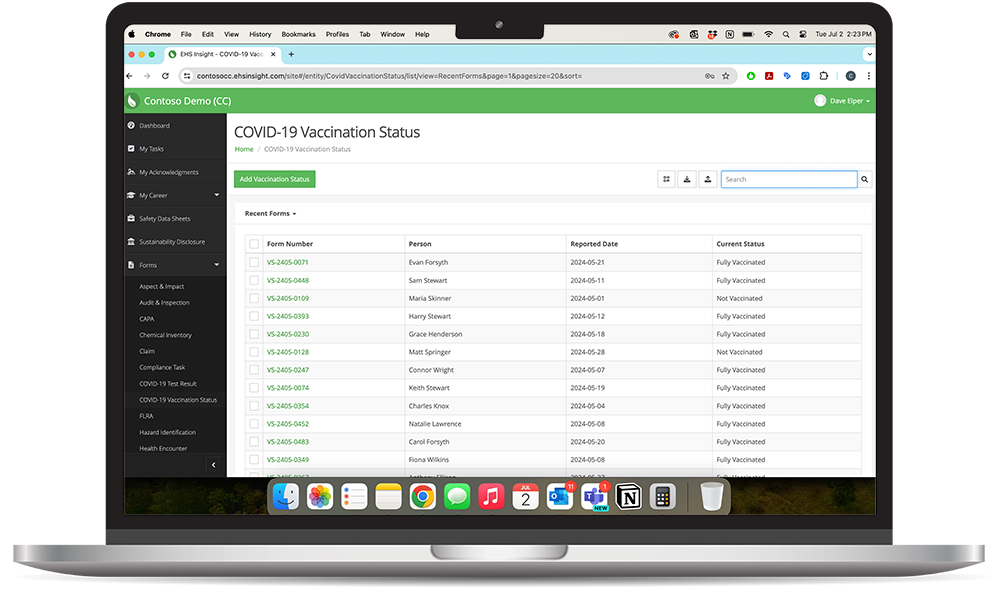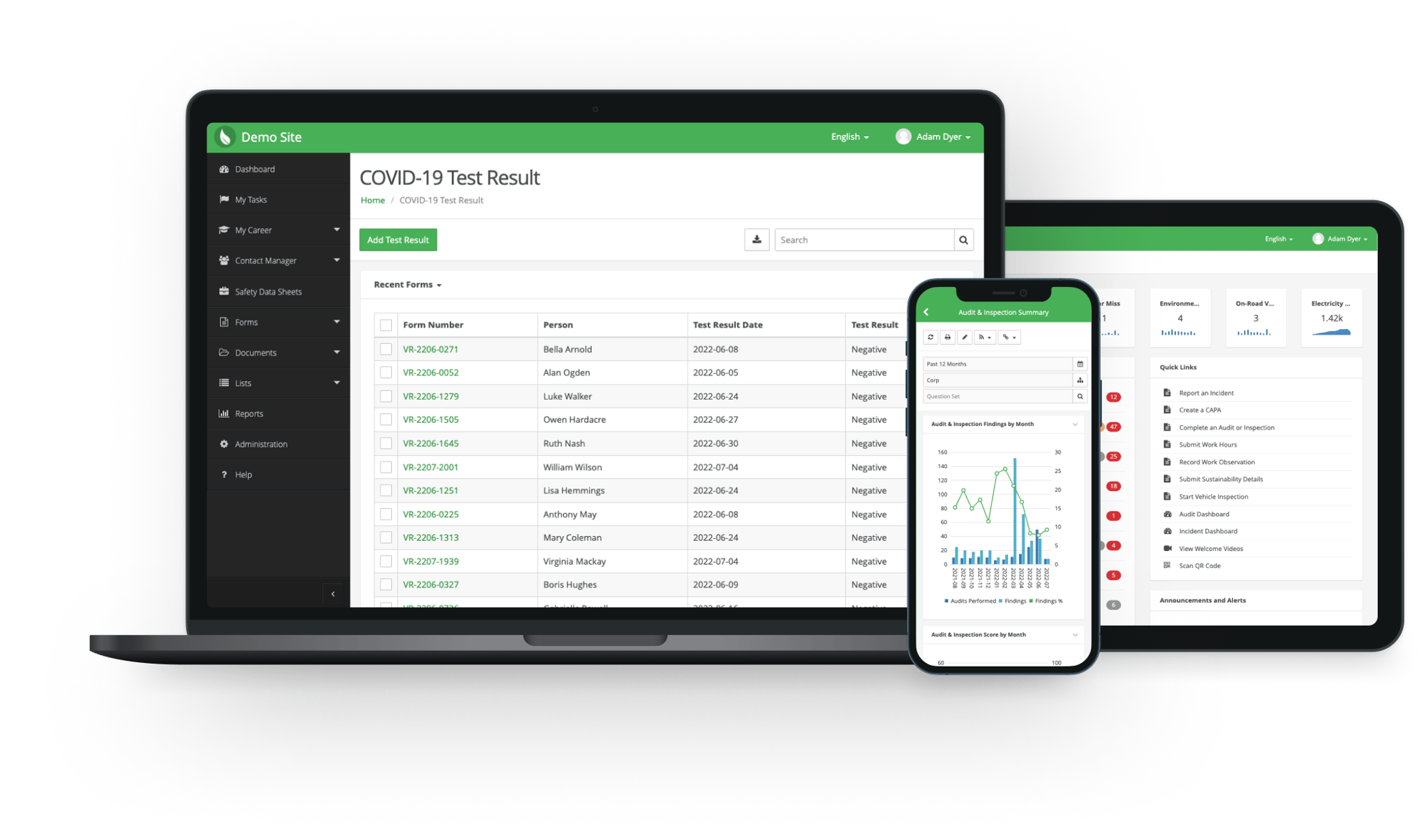
Improve Your COVID-19 Recordkeeping
Protect your employees with the all-new COVID-19 records management module from EHS Insight.
Gain COVID-19 Compliance with EHS Insight
Meet the requirements for COVID-19 vaccination and testing, including capturing the vaccination status of every employee, maintaining a register of that status, and more.





